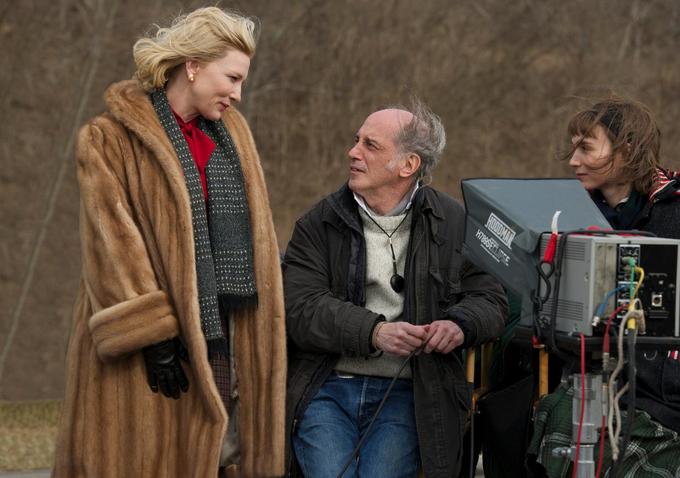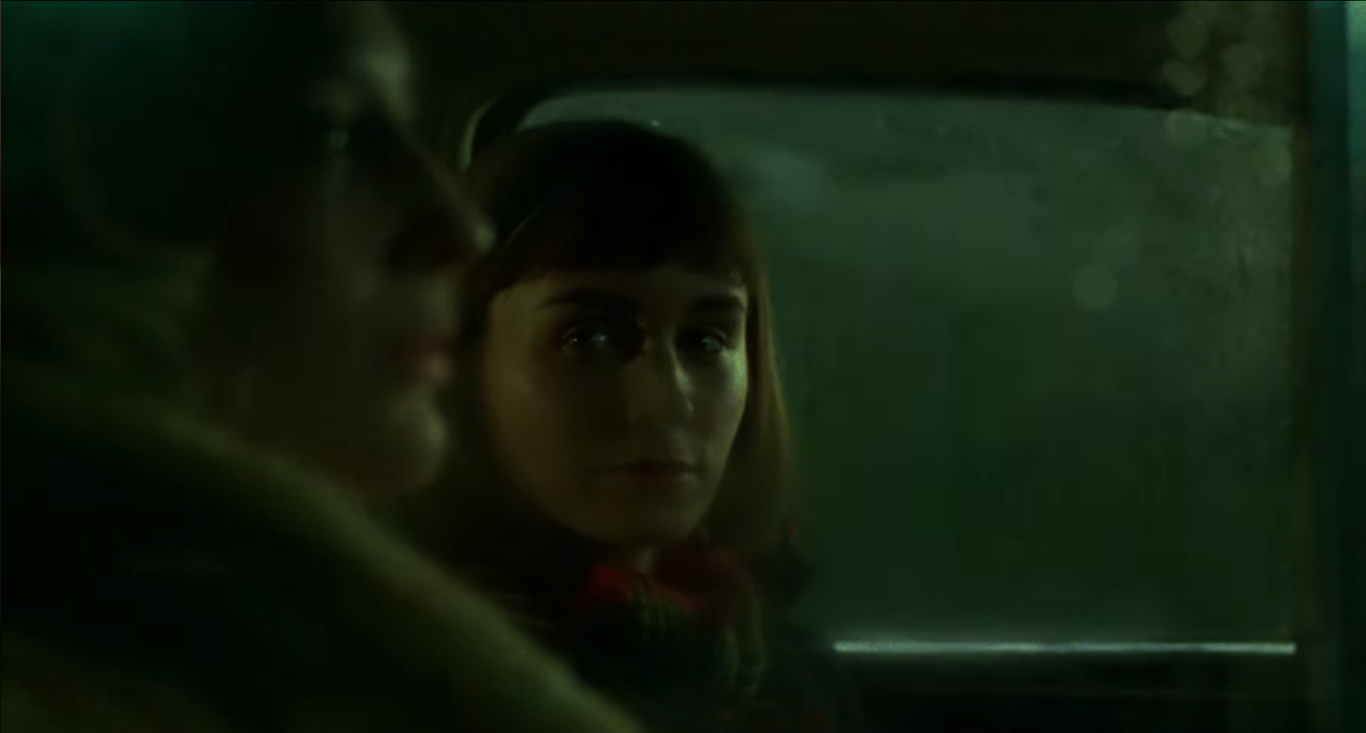"Carol" Week: An Evening with Cinematographer Ed Lachman
 Tuesday, December 22, 2015 at 5:32PM
Tuesday, December 22, 2015 at 5:32PM Kieran, here wishing everyone a very happy Carol week. If ever there was a film that truly deserved an entire week dedicated to celebrating it, it’s Todd Haynes’ sumptuous cinematic buffet. The piece is a rare animal in the landscape in that it truly feels like every element of its filmmaking works cohesively in service of the overall vision. That was apparent on a re-watch last Friday evening in Los Angeles and even more so afterwards listening to cinematographer Edward Lachman talk to the audience about the process of finding the appropriate look for it after the screening.
“Todd always does great research before every film,” one of the many moments of him singing his director’s praises. “One of the greatest mandates was making sure it didn’t resemble Far From Heaven,” Lachman stated. [More...]
 Cate Blanchett with Ed Lachman & Rooney Mara on set
Cate Blanchett with Ed Lachman & Rooney Mara on set
“We wanted to draw a distinct line, visually between the mid-to-late 50s aesthetic [Far From Heaven] and more immediately post-war America [Carol].” In contrast with the bright, Sirk-ian palette of Far From Heaven, they opted for faded magentas, greens and yellows—what Lachman says Haynes called a “soiled, muted look.” He also discussed the importance for Todd Haynes that the look of each film be in line with the mindset and perspective of the characters, much like the deep, saturated exaggerated color palette of Far From Heaven being a reflection of Cathy Whitaker’s bright-eyed, naïve optimism, at least in the beginning.
 much of the film feels shot from Therese's POV
much of the film feels shot from Therese's POV
“In the novel, Therese’s character is a budding set designer. The switch was made to her being a photographer in the film in that it allowed us to delve further into Therese’s viewpoint, particularly when she’s photographing Carol.”
Watching the film a second time, it was especially apparent how true this is and it throws into even sharper relief how ridiculous it is to categorize Rooney Mara as a supporting actress. The filmmaking itself so often takes us into Therese’s mind and Lachman’s camera frequently feels like a stand-in for her eyes.
“You see a lot of shots of Therese in doorways, in cars, surrounded by objects or activity that’s in motion compared to how static she is. Todd wanted to create the feeling that this character is trapped, suffocated and unsure of how to proceed.”
 Therese lost in thought at work
Therese lost in thought at work
When asked about the most difficult scene in Carol to shoot, Lachman answered without hesitation. “The opening sequence that ends with us viewing Therese obscured through the window of the car,” his frustration apparent.
“Todd wanted very little light, despite the fact that it was night time and we were outside.” The obscuring of both Therese and Carol in several shots, like when they are driving through the tunnel, wasn’t always intentional it turns out. “Carol is often an obscured object in Therese’s estimation, so it fit well.” In a film so seemingly meticulous, so impeccable in its construction, it’s fascinating to imagine any part of that construction being a happy accident.

Even with Haynes being absent from the screening, the rapport between him and Lachman was evident. Carol is their fourth collaboration and they are currently in pre-production for a fifth feature film. Lachman was reticent about giving away any details about the latest project, but he did say this, with a slight chuckle. “I’m sure it’ll be lovely.”

more on Carol | more Cinematography posts | Oscar predictions visual



Reader Comments (3)
This and The Assassin (give or take a few bits of Fury Road) are the two films from this year I want to watch endlessly on loop.
Beautiful imagery and/or an evocative visual style are so much more important in my book than concise or readily digestible plotting (though I enjoy that as well!)
And rich visuals actually often contribute way more to character depth and my ability to empathise with a protagonist than does traditionally economical storytelling - which can sometimes actually get in the way (e.g. the very good but not quite great Brooklyn).
goran, I'd be interested to hear your take on Brooklyn's visuals, because I thought they were largely on point and sometimes even better.
Arkaan, they were okay, even very good at times when the colour palette really fit the milieu and felt very 50s without being self-conscious about it. But there were other times where it felt like the shoot schedule was a bit tight and the locations not the best choice, eg. that outdoor lunch Eilis has in the harshest imaginable sunlight (in Ireland! harsh sunlight!) with Domnhall Gleeson's family. Also quite often the compositions were either arbitrary or even amateurish. I think overall it was actually the art direction that did a lot of the heavy lifting and compensated for the cinematography. I wish the story was in the hands of a more visionary director (and thank dear zombie jesus the same guy didn't get to direct Carol like it was originally planned!)
I'm being very finicky here though because overall I did really really like the film and found it moving. It's easily in my Top 20 of the year so far. Being a migrant myself I rarely actually respond to migrancy stories because they're nearly always blandified. But this one hit me hard and I found it captured a lot of the inner aspects of the immigrant experience through details that should be obvious but are rarely even depicted much less explored on screen - especially the first, seemingly endless rush of homesickness, the gradual way a new place changes you inside out and inside and out again, and the contradictory feelings and shock and love-hate relationship you have with your native place when you return to it. Weirdly I found the novel pretty disappointing and, well, trite from these aspects. But not the film.
And kudos to Ronan for capturing this entire throughline without a glitch or seemingly even breaking a sweat. I especially loved how her bearing and body language evolved as she became more and more 'American' and how Eilis pointedly played up this aspect when she went back home to Ireland.